If you haven’t heard, hubs are an effective strategy for improving internal linking, keyword rankings, and increasing organic traffic. Our clients often come to us with questions about the different types of content hubs and how to choose the best one. With several types and so many different names for each, it can be daunting to know where to start.
In this post, I’ll summarize the key differences between each hub with a comparison table and provide examples of the different types of content hubs.
What Is a Content Hub?
A content hub is a home to organize content about a common topic. It involves an internal linking strategy where content links back to a central hub page and ideally other related content.
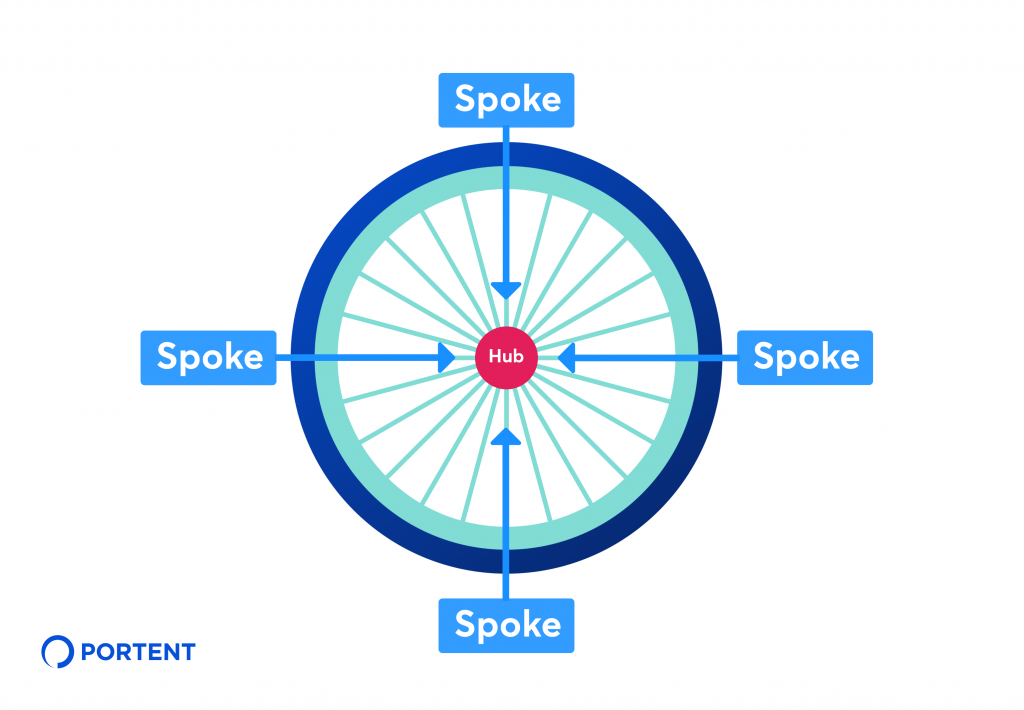
How to Create the “Right” Content Hub for Your Needs
To determine which content hub to choose, start by determining why you think you need a content hub and evaluate your existing solutions (e.g., blog, resource center, etc.). Also, consider your KPIs, user needs and user journeys, and resources needed to build out your hub and any content.
Here’s a comparison table to help summarize the key differences between each content hub (this table compares the landing page of the hub only):
| Good For | Content Hub Type | |||||
|---|---|---|---|---|---|---|
| Main Hub | In-Context Hub | Content Library | Content Database | Topic Gateway | Topic Matrix | |
| Internal Linking | X | X | X | X | X | X |
| Backlink Generation | X* | X | X* | |||
| Topical Authority | X | X | X | X | X | X |
| Lead Generation | X | |||||
| User Engagement | X | X | X | X | X | X |
| Organic Traffic to Hub | X | X* | ||||
| Single Topic | X | X | X | |||
| Multiple Topics | X | X | X | X | ||
| Organizing | X | X | X | X | X | X |
| Organizing >1K Pages | X | X | ||||
| Organizing Different Content Formats | X | X | X | X | ||
| Resource Intensive | X | X | X | X | X | |
*It will ultimately depend on the hub: topic, search intent, and content on the hub page.
6 Types of Content Hubs and Examples
If you’re debating between several types of hubs or are unsure what each hub entails, here’s a summary of the six common types of content hubs, along with examples of each. These examples consist of common content hub types we frequently see and work on within the digital marketing industry.
1. Main Hub (a Variation of Hub-and-Spoke)
A Main Hub is a parent page, known as the “hub,” that acts as a home or library to organize related content, known as the “spoke” pages. Since the focus is on housing and organizing content, there isn’t much or any copy on these hub pages.
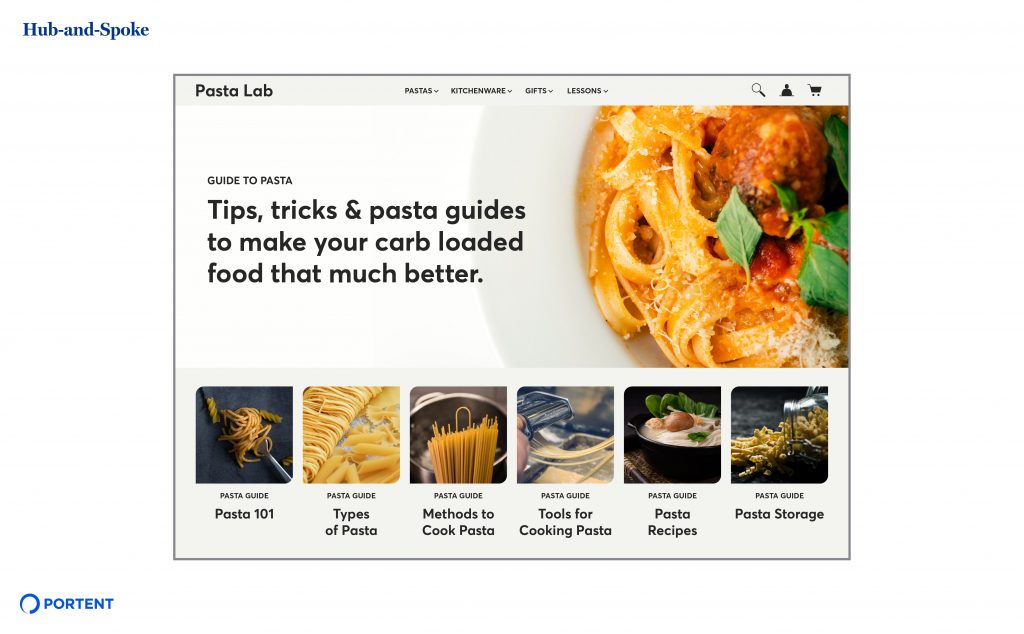
Main Hubs vary in design, layout, and complexity. It can be as simple as a landing page with a list of spoke pages or a landing page with a grid containing cards representing and linking to each spoke.
Main Hubs are one variation of a Hub-and-Spoke content strategy. There’s another variation that we call “In-Context Hubs” at Portent. I’ll cover that one next.
Examples of Main Hubs
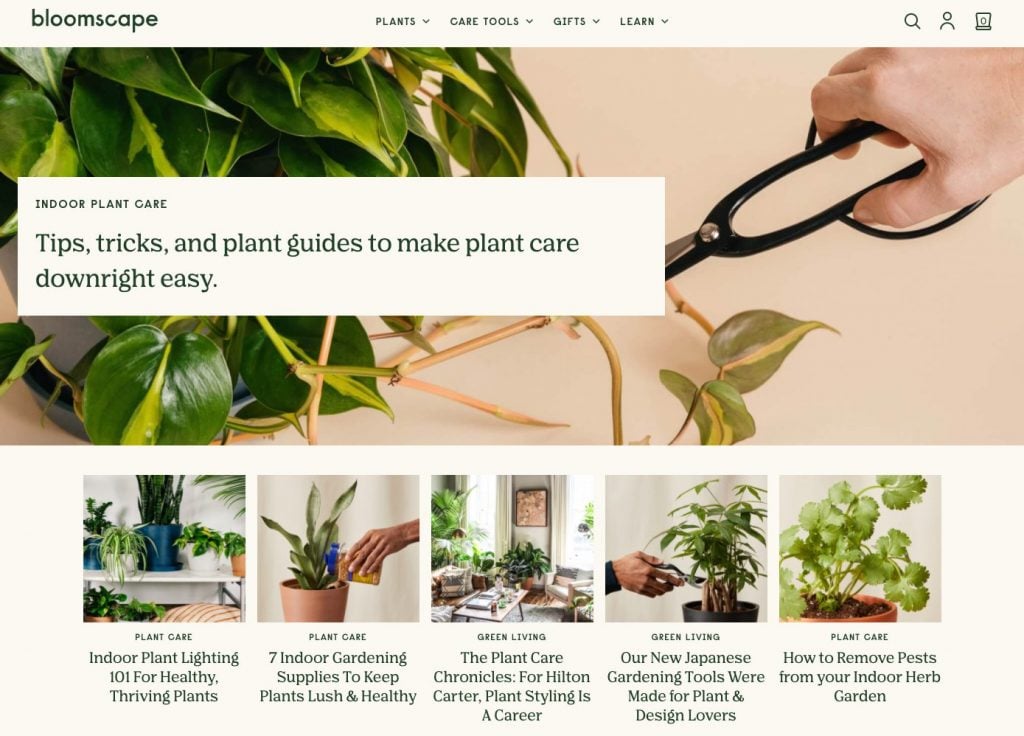
Additional Examples:
2. In-Context Hub (a Variation on Hub-and Spoke)
In-Context Hubs are evergreen articles with extensive in-line internal linking and mini navigation to encourage users to visit other related pages. Because of the evergreen content and article format, this type of content hub tends to perform better for organic traffic as it’s more likely to rank for relevant keywords than a landing page without content.
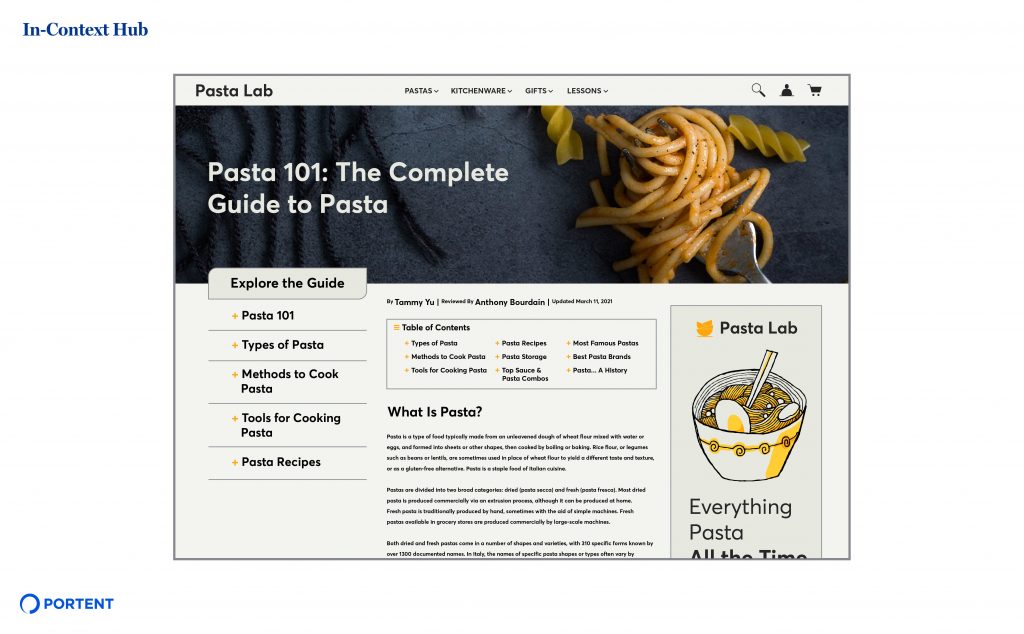
This is another form of a Hub-and-Spoke. However, this type of content hub is not ideal for organizing large amounts of related content. There’s an opportunity for an “Additional Resources” section, however; space can be limited, so relying on this section to incorporate a long list of related content (4+ pages) is not ideal.
In-Context Hubs are by far the simplest; add a few links here and there, and poof, you have an In-Context Hub. Extra credit for you if you include a table of contents and a mini information architecture (IA) for users to navigate to spoke pages.
Examples of In-Context Hubs
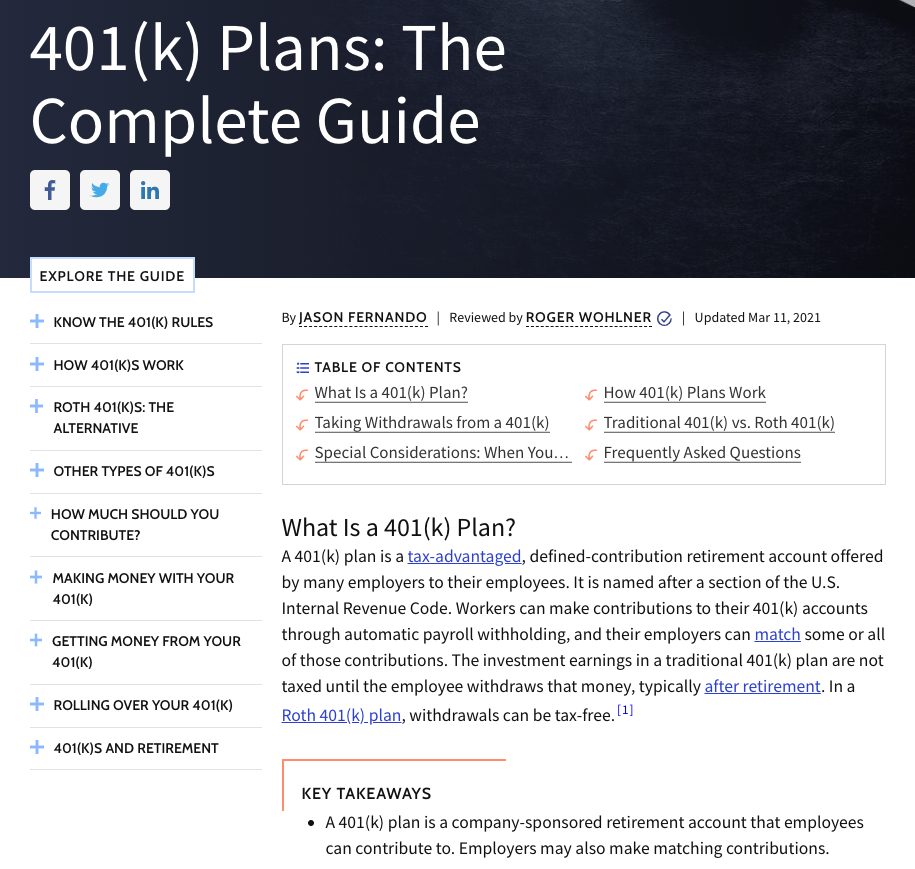
Additional Examples:
- The Balance – “How to Make a Budget”
- Allure – “The Ultimate Beginner’s Guide to Skin Care”
- Squarespace – “How to Build a Website”
3. Content Library
A Content Library organizes content by categories and subcategories with links to related content in each group. Unlike a Main Hub, a Content Library may consist of content spanning multiple topics.
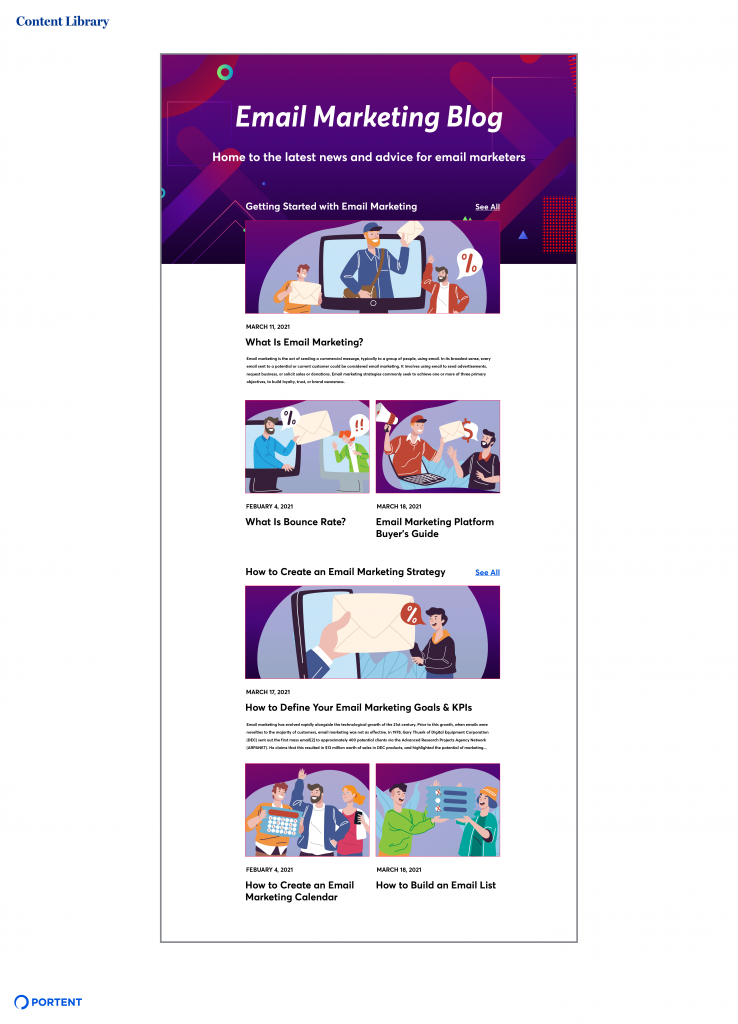
Jimmy Daly from Animalz put it best; blogs should be treated as libraries, not publications that organize content in reverse chronological order.
Content Libraries will likely require resources and approvals from higher up to implement as it requires re-doing the blog’s homepage.
Examples of Content Libraries
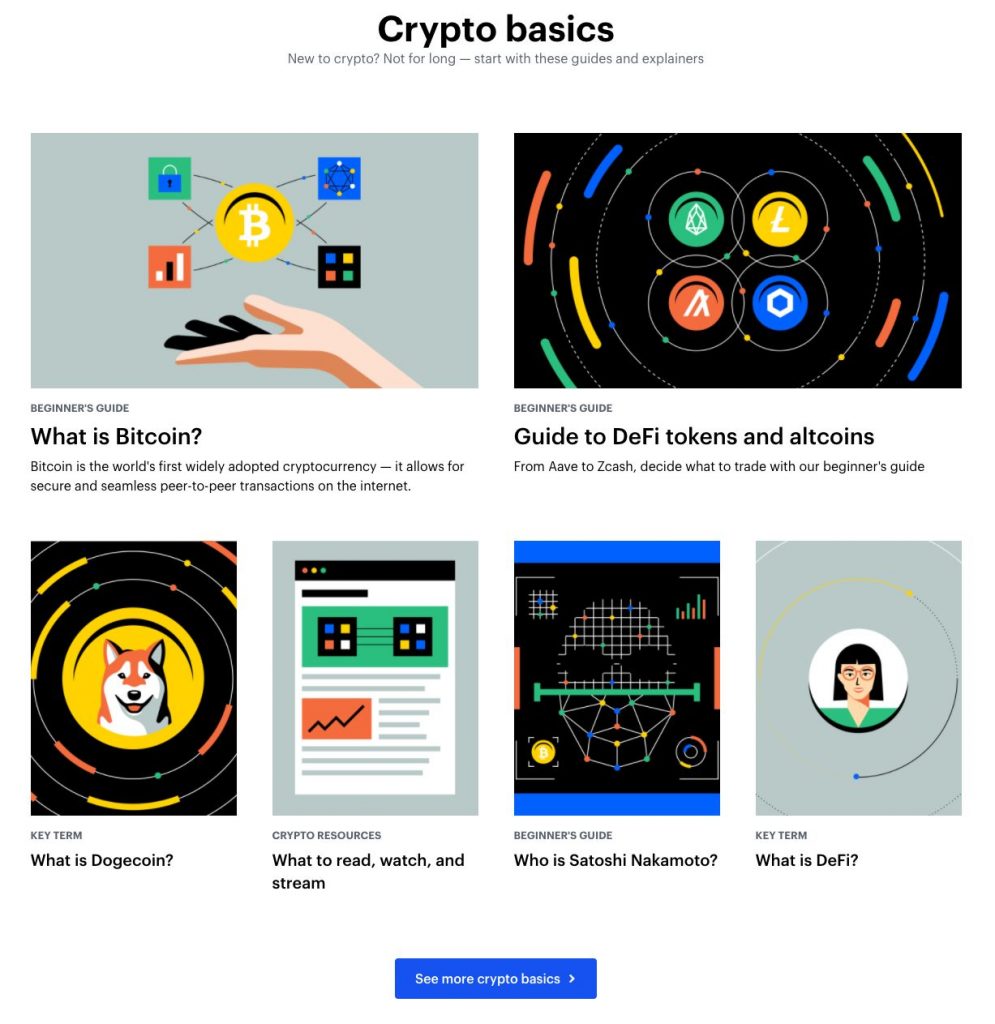
Additional Examples:
4. Topic Gateway
Topic Gateways are more advanced forms of blog category pages or Main Hubs. These hubs tend to have content to describe the topic, along with links to related content.
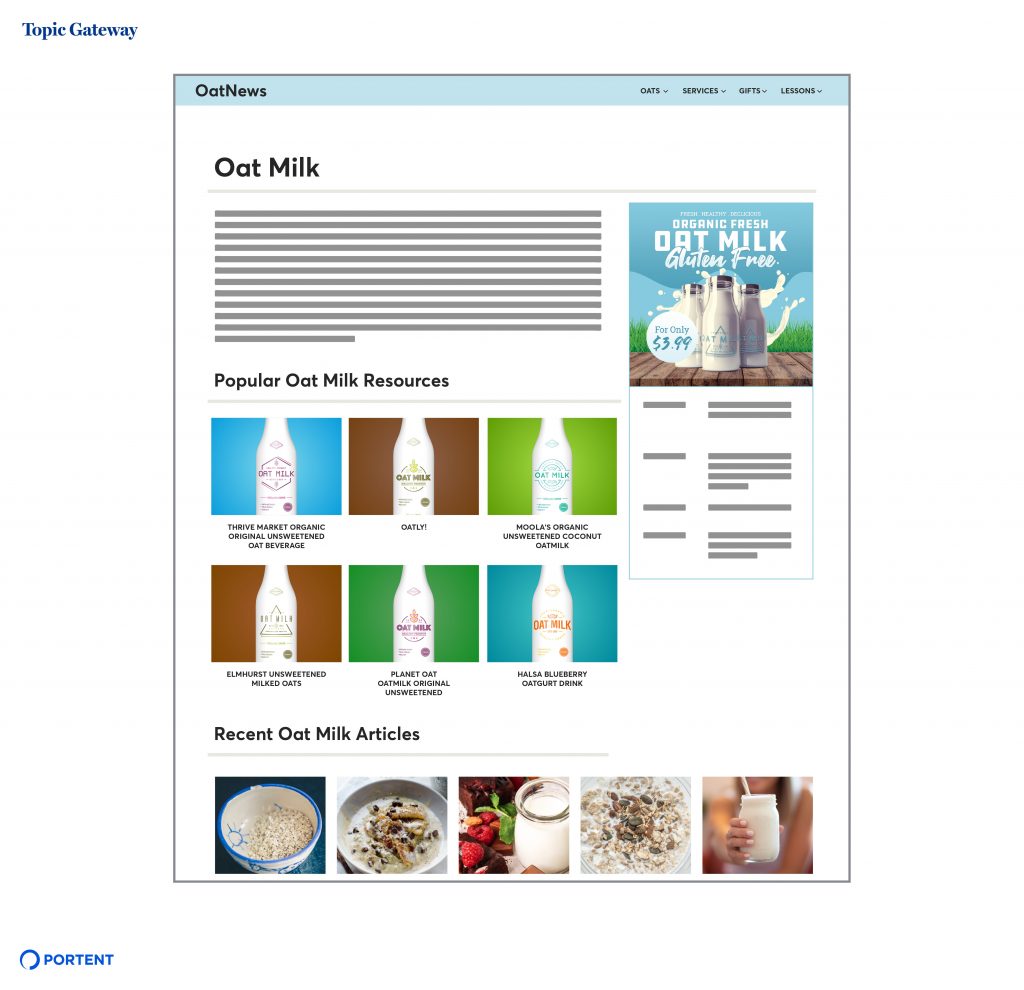
As Kane from Content Harmony put it, “Topic Gateways are like blog category pages on steroids.”
Depending on how intricate you want the Topic Gateway Hub to look, it may require resources and approvals to implement.
Examples of Topic Gateways
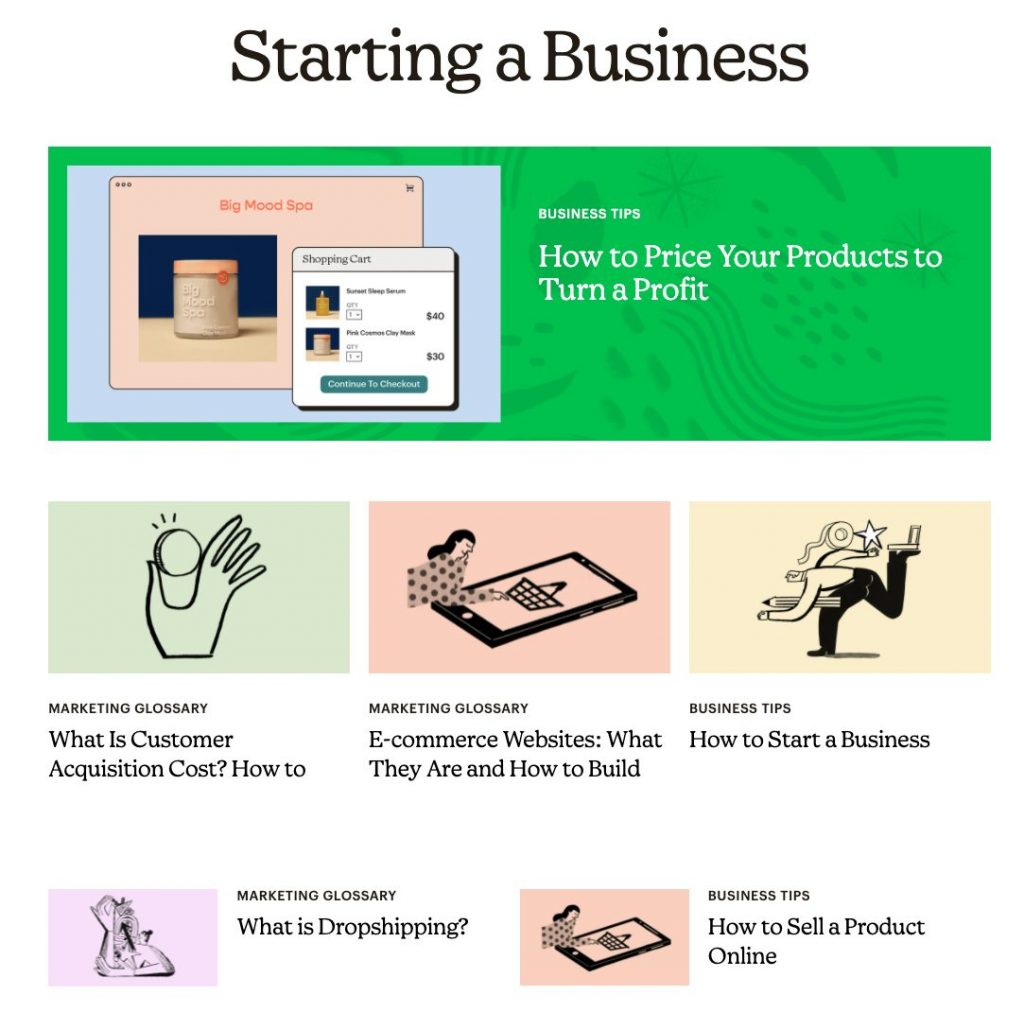
Additional Examples:
5. Content Database
A Content Database is a hub for organizing multiple topics and types of content by including a mini IA or filters for the user to discover content. This type of hub encourages users to explore content and find what’s most relevant for them.
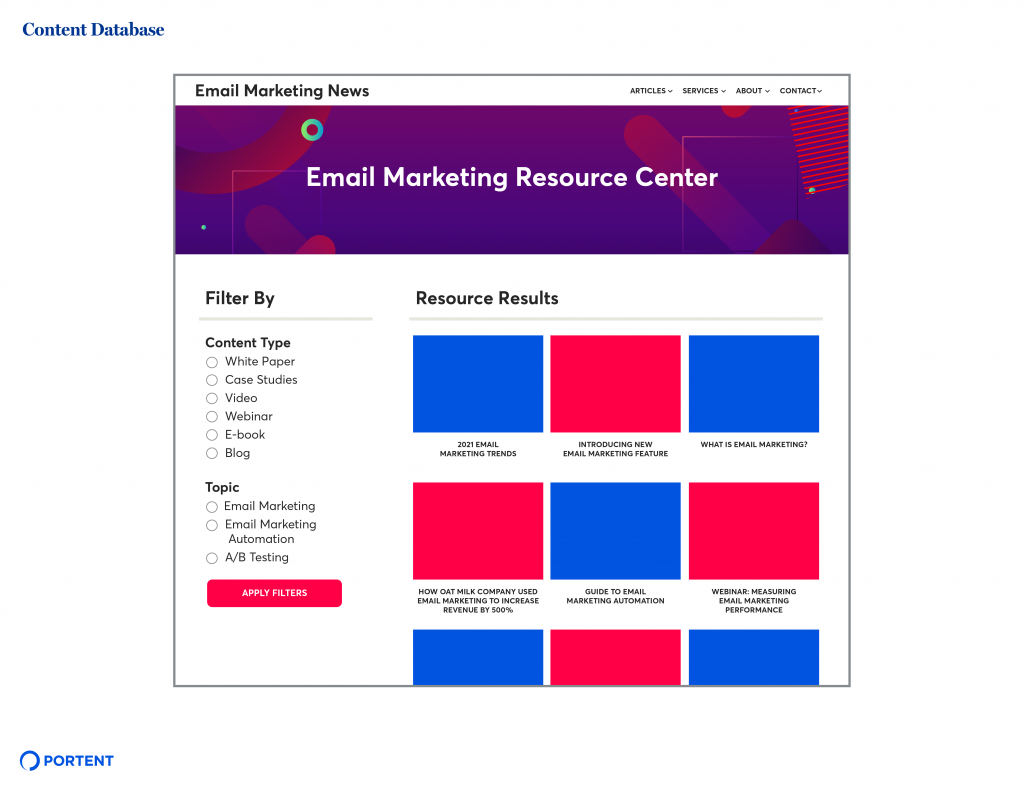
For SaaS companies, a Content Database Hub can be a Resource Center where users can browse through various content formats like white papers, ebooks, guides, webinars, blogs, etc.
This is one of the more complex content hubs to implement, as it will need its own mini IA and filters.
Examples of Content Databases
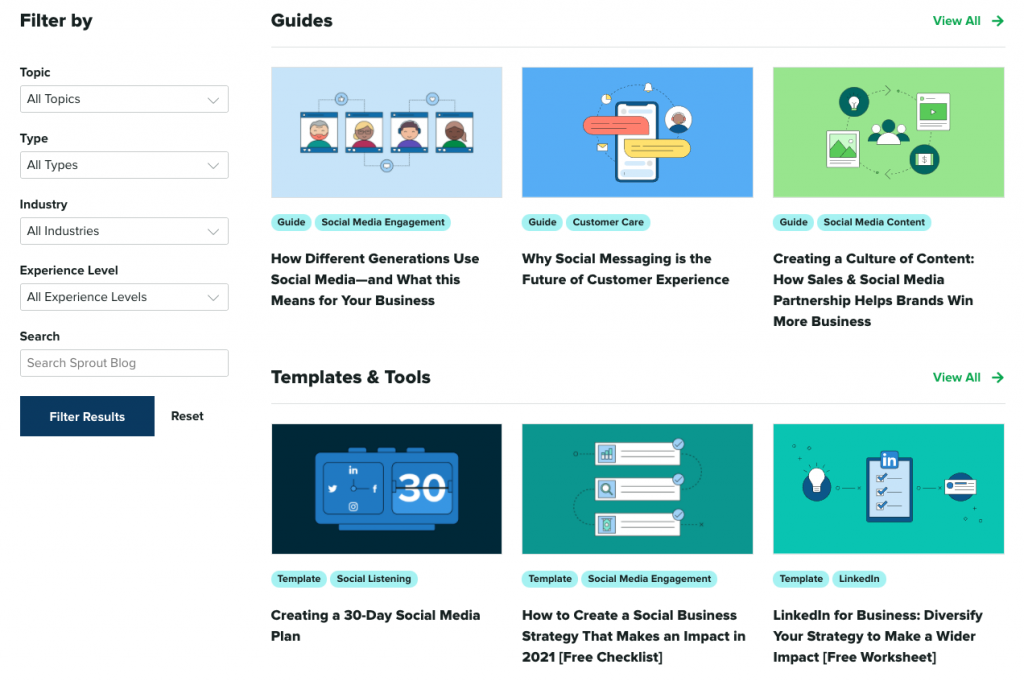
Additional Examples:
6. Topic Matrix
A Topic Matrix is a hub that organizes a large amount of content with the same template and layout.
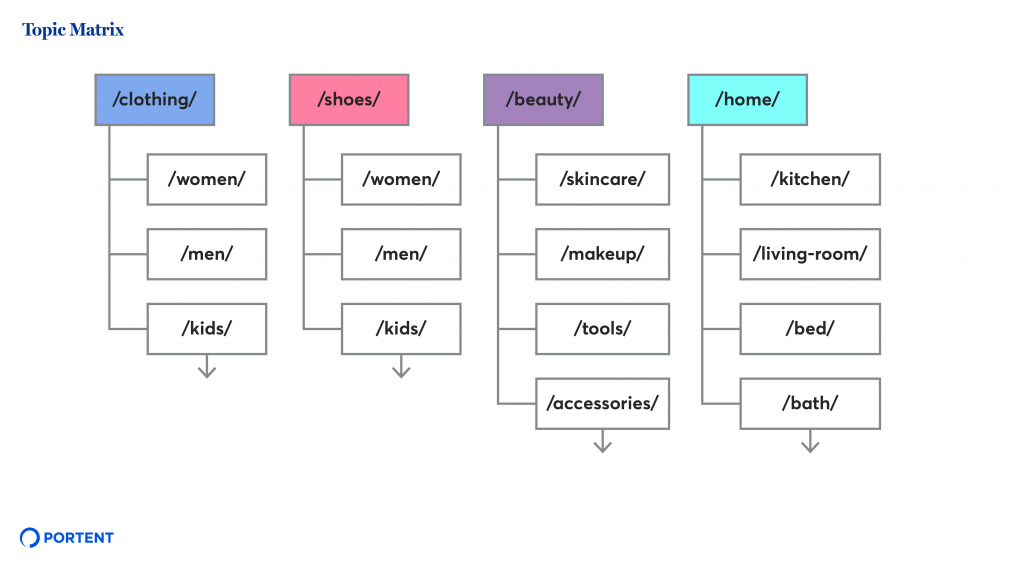
Although Topic Matrixes most commonly exist in the form of templated category pages with limited content, there are instances of Topix Matrixes that do have content (e.g., Mayo Clinic’s “Diseases and Conditions” hub example and the content linked).
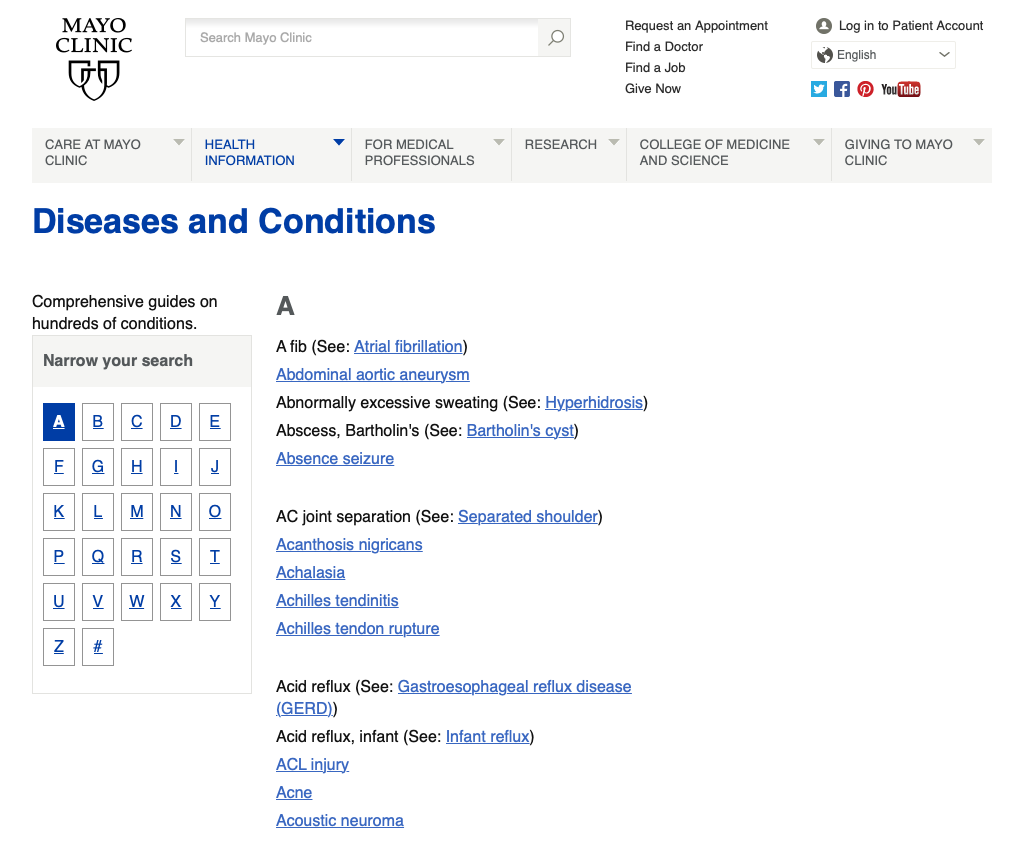
A significant component of a Topix Matrix hub is the IA to support such large amounts of content. As such, this hub will require collaboration from multiple teams: product, design, and development, to name a few.
Examples of Topic Matrixes
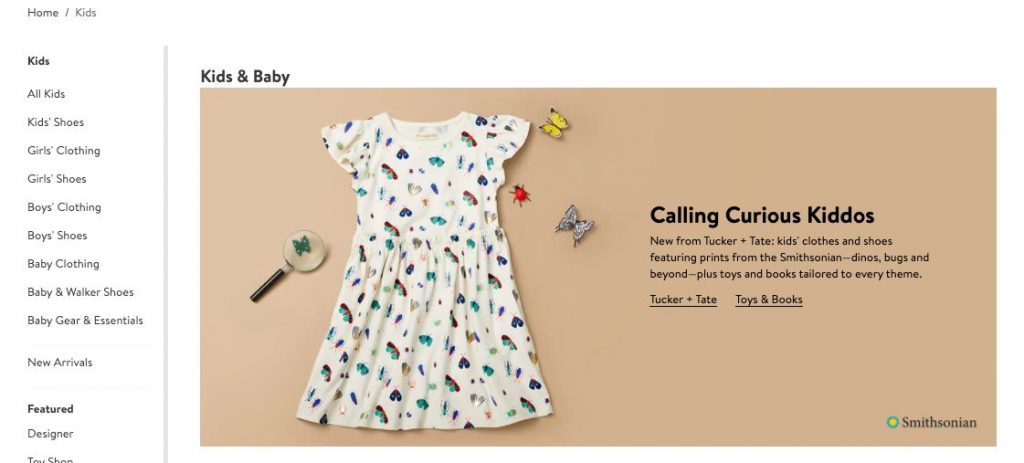
Additional Examples:
- Zillow – “Seattle WA Real Estate & Homes For Sale”
- Uber Eats – “Washington Food Delivery & Takeout”
- Mayo Clinic – “Diseases and Conditions”
To Wrap Up
When executed correctly, content hubs can be extremely powerful as an organic strategy. Use the comparison table above as a guide to help you determine which content hub best suits your needs. When you’ve made a decision, check out our blog post on how to create a content hub and all that it entails.









